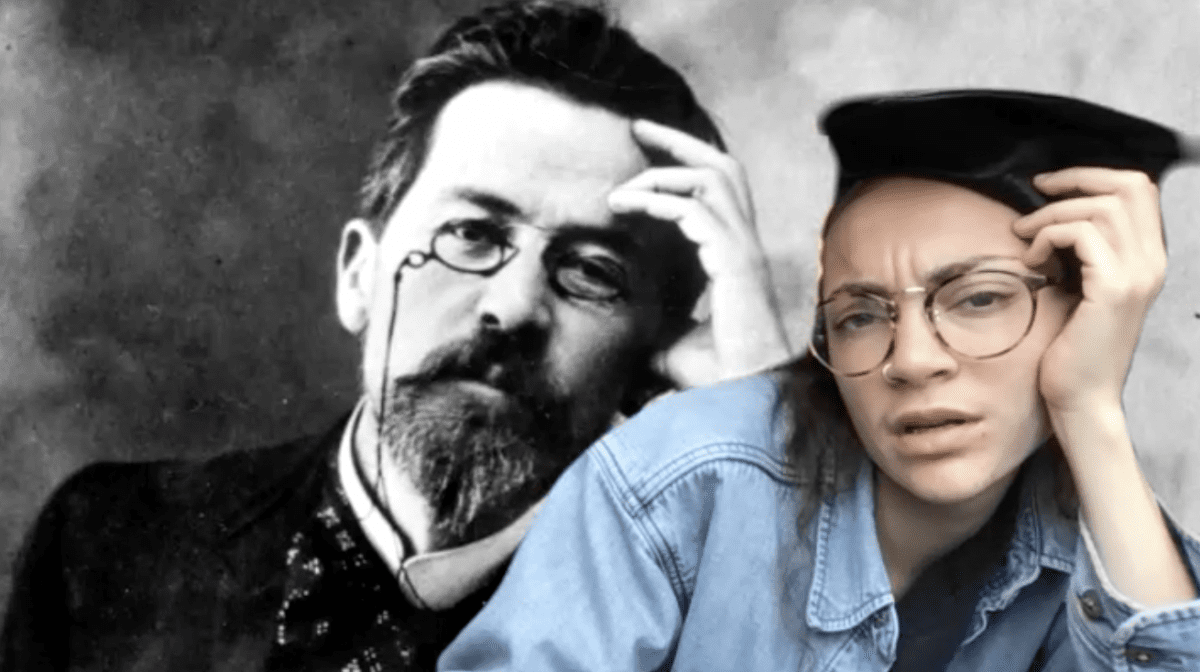In this new COVID world stripped of the joys of live theatre, what becomes of the medium and the players? What happens to our purest forms of expression — love and art — when we are forced into isolation? “In These Uncertain Times” is the most modern expression of theatre, transforming Zoom and social media into a curated means of expressing the angst and beauty of this particular moment without the control of the stage or the reciprocal energy of the audience and the players. This is a thoughtful, funny, wonderfully creative hour of hilarity, energy, and poetry, and it points to a new type of performance.
Six theatre friends Zoom meet-up together, talking, lamenting, drinking, expressing their disjointed, isolated, disrupted world. In my performance, a chihuahua made itself comfortable on the bed behind one of the players. One player, Annelise, has a riotous, depressing breakdown where she leaves the frame wailing while her friends continue the chat. They let her continue on without a word to her, seemingly without caring, together but each in their own hive. How can we truly console one another from afar?
The piece cuts to a beautifully orchestrated home drinking game, as the six ebulliently down successive shots to raucous Klezmer music. It is an astonishing feat of practice, togetherness, and performance. As they drink, each becomes more frenzied until all six are in uncontrollable chaos. Players talk over one another, one drinks straight out of the bottle in the shower, another disappears from the frame entirely, returning bloody and stunned. One player, Miles, equates us all as a plane coming down from the sky. The transition from hilarity to a palpable sadness is unexpected and effective.
The strongest passage of the piece is the four women lamenting their invisibility to the one they love. While Chopin plays, they riff on increasingly absurd scenarios. It gets more absurd, funnier, and tighter as the passage progresses. To me, this was a brilliant piece of theatre. With its focus on the face and the frame, Zoom can combine elements of film and theatre to create something entirely new, and it’s exciting to think that we are only at the beginning of exploring its creative potential.
Beautiful writing comes through in the last half, with the characters wondering about love and grief, two twins of feeling. Grief is a way of loving that which has been stripped from you, not just a person, but cities, a moment, a life. A voiceover wonders about whether love can still exist during this time — “Will someone be worth taking off your mask off for?” In addition to its brilliant double entrendre, this typifies the necessity of the theatre — where else are these soulful questions being asked? Here, too, the use of Zoom was put to innovative use — five players in a darkened room, while the sixth wanders under a blue sky, onto a beach, into the water.
Despite the characters’ declaration that they have lost their means of expression, this piece crackles with innovation. This is theatre in its new iteration — its players agile and thoughtful, making use of space, light, frame, and synchronization, made more astonishing by their collective separation. It lacks the immediacy of the theatrical space and the shared experience, but like live theatre, they knowyou are there.
The physical connection to you in the theatrical space is what’s missing, but not the players’ passion and drive. And this piece suggests that creative thinkers and artists will stretch the Zoom medium in ways yet to be discovered, until we can meet again.

